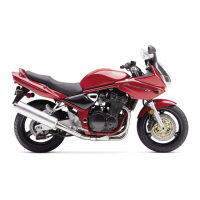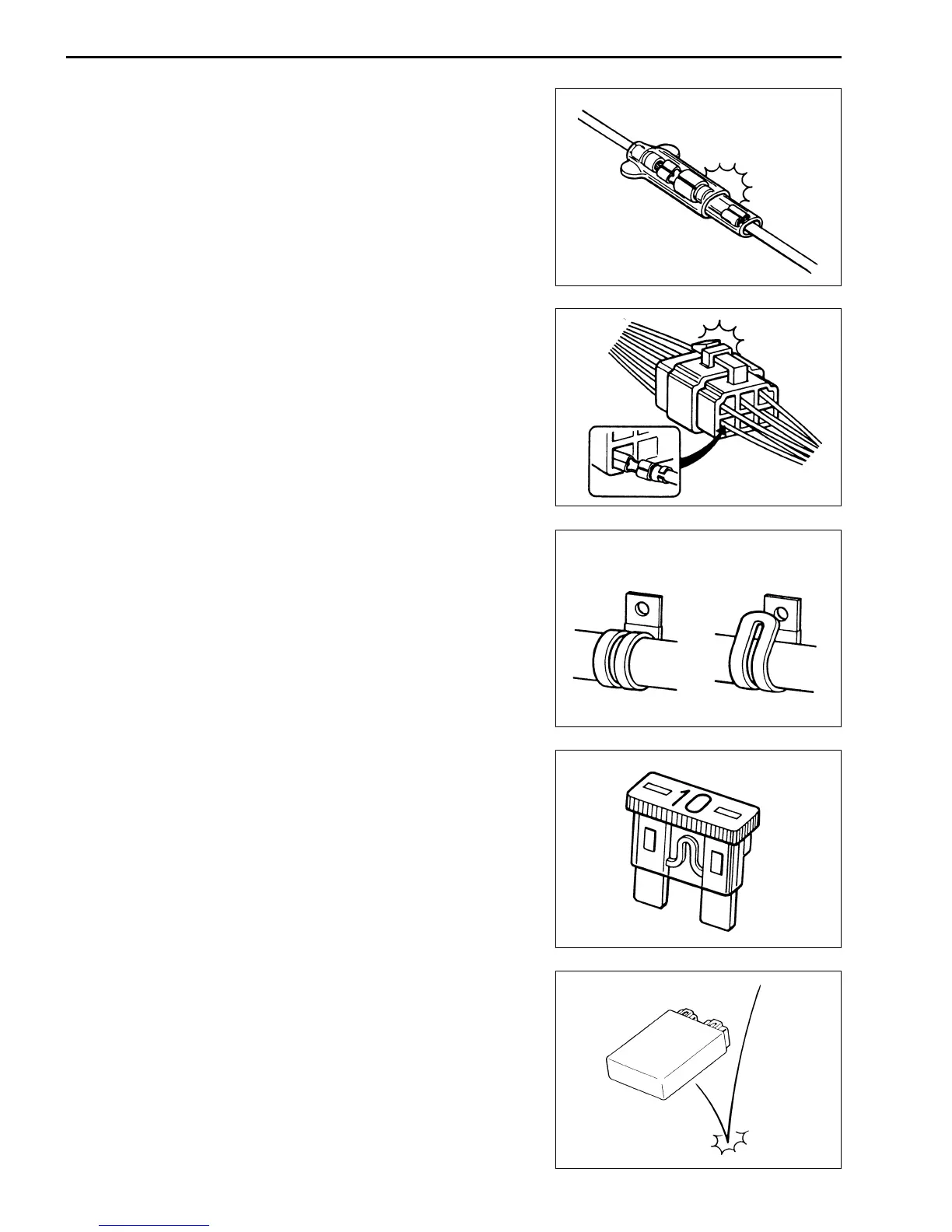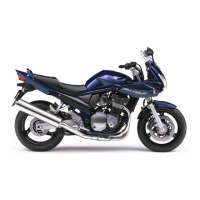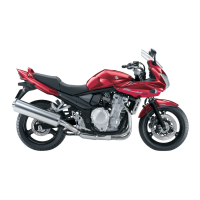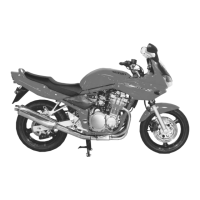6-2 ELECTRICAL SYSTEM
CAUTIONS IN SERVICING
CONNECTORS
• When disconnecting a connector, be sure to hold the ter-
minals; do not pull the lead wires.
• When connecting a connector, push it in so it is firmly attached.
• Inspect the connector for corrosion, contamination and any
breakage in the cover.
COUPLERS
• With a lock-type coupler, be sure to release the lock before
disconnecting it. When connecting a coupler, push it in until the
lock clicks shut.
• When disconnecting a coupler, be sure to hold the coupler; do
not pull the lead wires.
• Inspect each terminal on the coupler for looseness or bends.
• Inspect each terminal for corrosion and contamination.
CLAMPS
• Refer to “WIRE HARNESS, CABLE AND HOSE ROUTING”
(!7-12) for proper clamping procedures.
• Bend the clamp properly, as shown in the illustration.
• When clamping the wire harness, do not allow it to hang down.
• Do not use wire or any other substitute for the band-type clamp.
FUSES
• When a fuse blows, always investigate the cause, correct the
problem and then replace the fuse.
• Do not use a fuse of a different capacity.
• Do not use any substitutes for the fuse (e.g., wire).
SEMI-CONDUCTOR EQUIPPED PARTS
• Do not drop any part that contains a semi-conductor (e.g., igni-
tion unit, IC regulator).
• When inspecting the part, follow the inspection instructions
carefully. Neglecting proper procedures may cause this part to
be damaged.
Click
CORRECT INCORRECT
INCORRECT
Click
